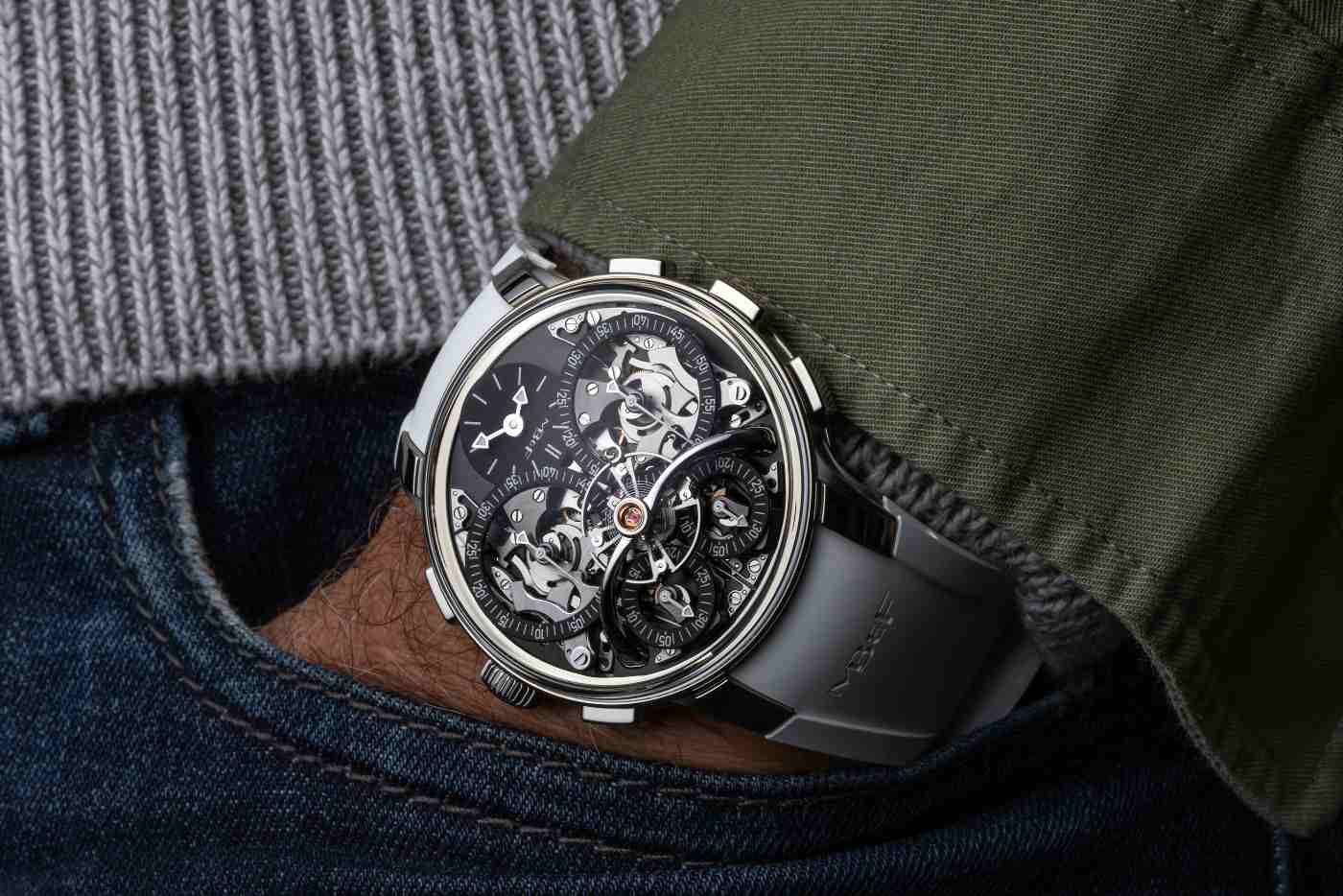2023: The great resurgence of small watches
Fernando AldeaWe explore the growing trend toward smaller watches in 2023, analyzing how aesthetic and functional preferences are reshaping the market, bringing the pendulum back from the gigantic watches of the turn of the century. Discover how this trend is revolutionizing not only design, but also the experience of wearing a luxury watch.
For a long time, in the world of luxury and technology, "big" was synonymous with "better ." Ostentatious watches with expansive dials dominated the scene, as did the first brick-sized mobile phones. However, as we've seen in technological evolution, where miniaturization has become an art (ultra-thin smartphones and wind-blown laptops, for example), luxury watchmaking hasn't been left behind. 2023 marks a notable return to the small and discreet, marking a significant shift in aesthetic preferences. This year, smaller watches not only symbolize a return to comfort and practicality but also reflect a renewed appreciation for classic and minimalist aesthetics. Elegance is now measured in discreet millimeters, and subtlety becomes the new luxury statement. We are witnessing a paradigm shift, where less is definitely more.
Rolex Oyster Perpetual Midsize 77080 31mm
Produced after the turn of the millennium, the Rolex OP ref. 77080 holds a special place in the brand's catalog. With a rare diameter of 31 mm, it is just above the traditional Oyster Perpetual size for women of 26 (later 28 mm) and just below the famous 36 mm size of the classic model. See moreHistory and context
The history of watches is a chronicle of innovation and style. Beginning with the pendulum clock in 1656, its evolution led to the development of the pocket watch in 1675, and later, the wristwatch, initially a luxury item for women in the 19th century. Practicality drove its popularity among men, culminating in the iconic Santos de Cartier in 1904, designed by Louis Cartier himself for his friend, the aviator Alberto Santos-Dumont. During World War II, the large and legible Flieger watches became essential for pilots, demonstrating how functional needs can influence design.
Subsequently, the conservative 1950s and 1960s saw smaller, sleeker watches, reflecting the fashion and aesthetic preferences of the time. However, at the end of the 20th century, a trend toward larger watches emerged, with brands like Panerai leading the way with bold designs. These watches symbolized power and presence, becoming fashion statements. Now, we're witnessing a return to small and minimalist, a shift driven by a desire for convenience and an appreciation for classics, marking a full cycle in the history of watchmaking.

Patek Philippe Calatrava 3420 Gübelin 34 mm
CLP $4,500,000In 1932, Patek introduced the Calatrava dress watch reference 96. Named after the Calatrava Cross, the symbol of the medieval Spanish Military Order of Calatrava and the corporate emblem of Patek Philippe, this watch is the blueprint for all dress watches that came after. See moreThe industry's response
At the recent Watches and Wonders trade fair in Geneva, the watch industry demonstrated its adaptation to the growing demand for smaller watches. Renowned brands are introducing more compact models, reflecting a significant shift in design preferences. For example, TAG Heuer introduced its Glass Box Carrera Chronograph, now in 39 mm, drawing inspiration from original designs from the 1960s. Tudor launched its Black Bay 54 diver's watch in 37 mm, a nod to its original 1954 model, while Chopard revised its LUC 1860 to 36.5 mm, and Cartier introduced a 35 mm version of its iconic Pasha.
Even brands historically known for their larger designs are making adjustments. Panerai, famous for its watches for powerful wrists, launched its Radiomir Quaranta in 40 mm, a notable reduction from its usual 45-47 mm. Jean-Marc Pontroué, CEO of Panerai, notes that this new direction has attracted a broader audience, including a surprising 40% of female buyers. This shift isn't just a fashion trend; it's also being driven by a new generation of collectors seeking more wearable and versatile watches. Furthermore, this trend toward smaller sizes is promoting a gender-neutral approach to watch design, with brands like Cartier and Audemars Piguet leading the way with more compact, unisex models.

Tudor Prince Oysterdate Mini-Sub 9440 33mm
The Tudor Mini-Sub has a small footprint that fits comfortably on the wrist. Although it's mini, it's a Submariner water-resistant to 200 meters, with a highly legible dial and equipped with specifications for the serious professional diver. See moreConsumer preferences and lifestyle
The current preference for smaller watches is a trend driven not only by a vintage revival but also by a new generation of consumers. According to Danny Govberg, President of WatchBox, the new wave of collectors prefers "more wearable" watches over the larger, flashier models of previous generations. This shift is in line with the rise in popularity of classic designs, such as Paul Newman's 37mm Rolex Daytona, whose 2017 sale for a record $17.7 million rekindled interest in iconic, smaller timepieces.
As we noted earlier, this interest in smaller watches also reflects a shift toward gender neutrality. Brands are moving away from classifying their watches by gender, opting instead to categorize them by size, materials, and style. Justin Reis, CEO of WatchBox, notes increased demand for unisex and smaller-sized watches, with brands like Cartier and Audemars Piguet leading this trend. The demand for more refined and elegant watches, while still featuring high-quality complications, is evident among both men and women. Guido Terreni, CEO of Parmigiani Fleurier, notes that even watches initially designed for women are attracting male collectors, and vice versa, indicating a shift toward a broader appreciation of smaller, more discreet timepieces.

Nomos Glashütte Tangente 38 Google Limited Edition
CLP $2,200,000 Sometimes more is more. Larger wrists have more room for minimalist watches. With a 38-millimeter diameter, this special-edition Tangente, limited to 100 pieces and created for Google in 2020, boasts perfect proportions. See moreImpact on collecting and the secondary market
The secondary watch market is undergoing a significant shift in response to the growing demand for smaller watches. Although luxury watch prices have fluctuated widely since 2022, the trend toward smaller sizes has increased the value of certain vintage models, particularly those with diameters under 40 millimeters. This increase in value is seen at brands such as Rolex and Patek Philippe, where prices for certain classic models, such as the Datejust, have increased significantly, reflecting both the desire for more understated styles and the enduring appeal of classic designs.
On the other hand, brands like Omega are seeing growing interest in both their new and old models. The popularity of collaborations like Omega's with Swatch for the MoonSwatch has created a new legion of watch aficionados, suggesting a shift in consumer preferences toward more accessible and versatile models. This renewed interest in smaller, sleeker watches is influencing the way collectors adapt their portfolios, seeking pieces that are not only valuable but also suitable for a variety of lifestyles and occasions.

Rolex Oyster Perpetual 36 Turquoise Blue
CLP $13,000,000Beautiful Rolex Oyster Perpetual watch with a 36 mm diameter case, and with a special feature: a spectacular turquoise blue dial, a color known in the watchmaking world as “Tiffany Blue”, and a traditional Oyster bracelet to secure it to your wrist. See moreConclusion
The trend toward smaller watches in 2023 is not a mere fashion fad, but a reflection of a constant evolution in the perception of elegance and luxury. This trend, rooted in an appreciation of the classic and minimalist, suggests a lasting shift in consumer tastes and preferences. In the future, we could see this preference for the discreet and refined continue to influence watch design, enriching the diversity and beauty of the luxury watch world.
This trend underscores the importance of adaptability and innovation in the industry, demonstrating that luxury and sophistication are not measured solely by size, but by the ability to capture the essence of time in increasingly elegant and subtle forms. Ultimately, smaller watches are a manifestation of a luxury that evolves with us, and a reward for those with patient, slimmer wrists, who also have the right to be happy.
More on the Blog








